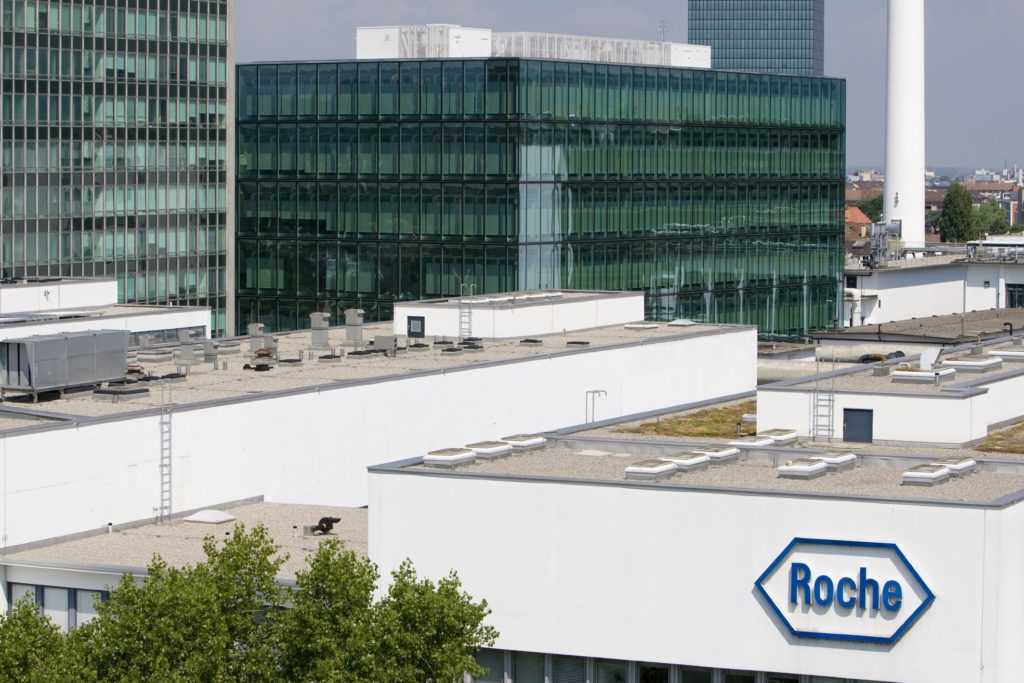Roche announced that the US Food and Drug Administration (FDA) has approved Herceptin Hylecta (trastuzumab and hyaluronidase-oysk) for subcutaneous (under the skin) injection to treat certain people with HER2-positive early breast cancer (node-positive, or node-negative and ER/PR-negative or with one high-risk feature) in combination with chemotherapy and HER2-positive metastatic breast cancer in combination with paclitaxel or alone in people who have received one or more chemotherapy regimens for metastatic disease.

Image: Site Roche Basel. Photo: courtesy of F. Hoffmann-La Roche Ltd.
Subscribe to our email newsletter
This new treatment includes the same monoclonal antibody as intravenous Herceptin® (trastuzumab) in combination with recombinant human hyaluronidase PH20, an enzyme that helps to deliver trastuzumab under the skin. Herceptin Hylecta is a ready-to-use formulation that can be administered in two to five minutes, compared to 30 to 90 minutes for intravenous Herceptin.[2]
“Over the past 20 years, Herceptin has significantly advanced treatment of HER2-positive breast cancer,” said Sandra Horning, MD, Roche’s Chief Medical Officer and Head of Global Product Development. “The approval of Herceptin Hylecta gives physicians and patients in the United States a new option to select treatment based on individual needs and preferences.”
The FDA approval is based on results from three clinical studies in HER2-positive early breast cancer:[1]
The phase III HannaH study compared neoadjuvant (before surgery) and adjuvant (after surgery) Herceptin Hylecta to intravenous Herceptin, both in combination with chemotherapy. Subcutaneous administration of Herceptin Hylecta resulted in non-inferior levels of trastuzumab in the blood (pharmacokinetics) and non-inferior clinical efficacy (pathological complete response rate; pCR) compared to intravenous Herceptin.[1]
The phase III SafeHER study of adjuvant Herceptin Hylecta identified no new safety signals, with safety and tolerability consistent with the known safety profiles of intravenous Herceptin and Herceptin Hylecta.[1]
The PrefHER patient preference study of adjuvant Herceptin Hylecta followed by intravenous Herceptin, or the reverse sequence, found the majority (86%) of people preferred Herceptin Hylecta over intravenous Herceptin.[1]
The most common side effects in people receiving Herceptin Hylecta for early breast cancer were feeling tired, joint pain, diarrhoea, injection site reaction, upper respiratory tract infection, rash, muscle pain, nausea, headache, swelling, flushing, fever, cough, and pain in extremity.
Herceptin Hylecta (subcutaneous Herceptin) is a combination of trastuzumab and Halozyme Therapeutics’ Enhanze drug delivery technology. Trastuzumab is the same monoclonal antibody in intravenous Herceptin that targets the HER2 receptor, a protein found on the outside of many normal cells and in high quantities on the outside of cancer cells in HER2-positive cancers.
Herceptin is designed to block HER2 signalling that is believed to play a role in tumour growth and survival.[4] Binding of Herceptin to HER2 may also signal the body’s immune system to destroy the cancer cells.[4] Halozyme’s Enhanze technology is based on a proprietary recombinant human hyaluronidase PH20 (rHuPH20), an enzyme that temporarily degrades hyaluronan, a glycosaminoglycan or chain of natural sugars in the body, to aid in the dispersion and absorption of other injected therapeutic drugs.
The subcutaneous formulation of Herceptin was first approved in Europe in 2013 and is now approved in 100 countries worldwide.
Source: Company Press Release
 Advertise With UsAdvertise on our extensive network of industry websites and newsletters.
Advertise With UsAdvertise on our extensive network of industry websites and newsletters.
 Get the PBR newsletterSign up to our free email to get all the latest PBR
news.
Get the PBR newsletterSign up to our free email to get all the latest PBR
news.

